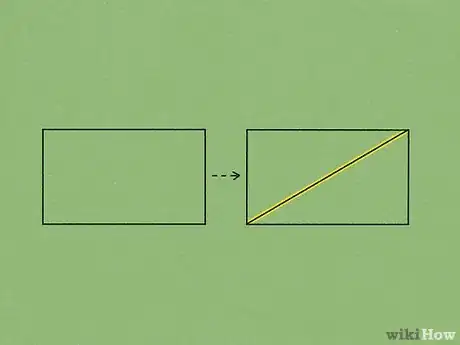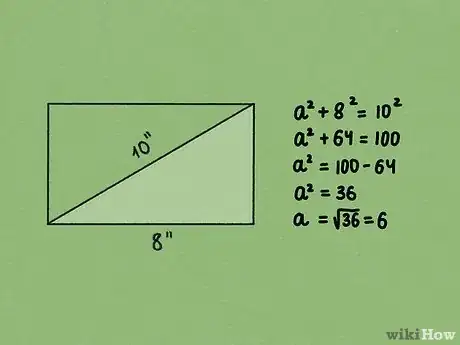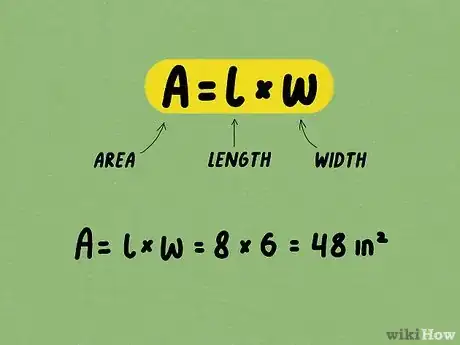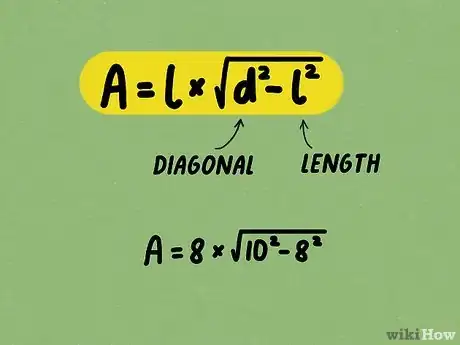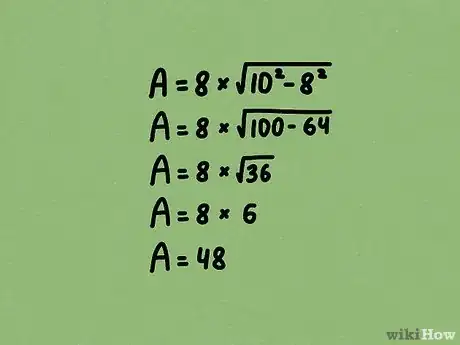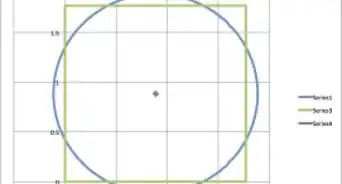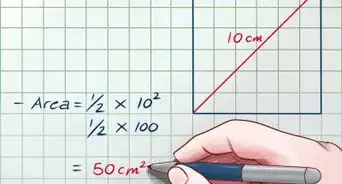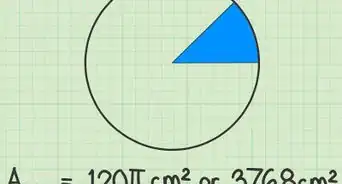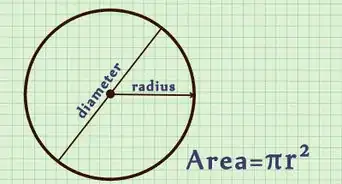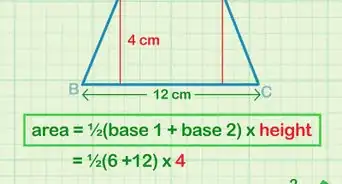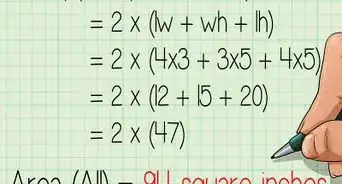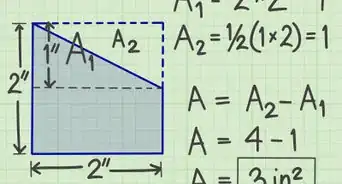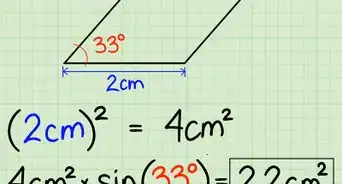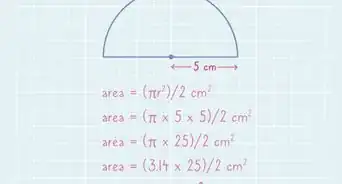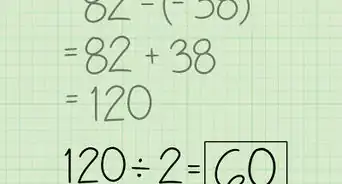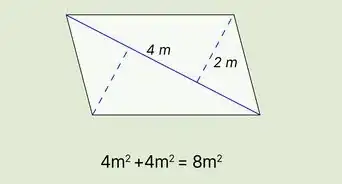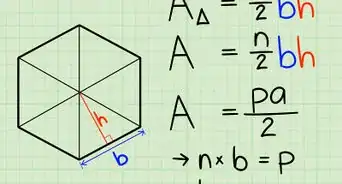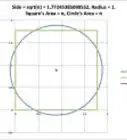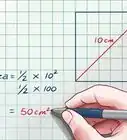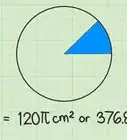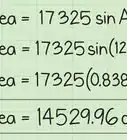This article was co-authored by David Jia and by wikiHow staff writer, Hannah Madden. David Jia is an Academic Tutor and the Founder of LA Math Tutoring, a private tutoring company based in Los Angeles, California. With over 10 years of teaching experience, David works with students of all ages and grades in various subjects, as well as college admissions counseling and test preparation for the SAT, ACT, ISEE, and more. After attaining a perfect 800 math score and a 690 English score on the SAT, David was awarded the Dickinson Scholarship from the University of Miami, where he graduated with a Bachelor’s degree in Business Administration. Additionally, David has worked as an instructor for online videos for textbook companies such as Larson Texts, Big Ideas Learning, and Big Ideas Math.
There are 7 references cited in this article, which can be found at the bottom of the page.
This article has been viewed 134,666 times.
When you’re working with rectangles, you can find out a lot of information about them just by knowing a few key points of information. If you’ve been given the length of the diagonal and at least one side, you can calculate the area of the whole shape with just a few equations. Always use a calculator to check your math, and don’t forget to add your units onto the answer!
Steps
Pythagorean Theorem
-
1Mark the diagonal on the rectangle. If you have a visual of your rectangle, it will be a lot easier to figure out the area given a diagonal. Draw out a rectangle (it doesn’t have to match the proportions given, just a rectangle shape will do) and mark out a diagonal line to create 2 triangles.[1]
- You’ll be able to see the 2 triangles that make up the rectangle now.
-
2Assign 2 sides of the triangle as and . Pick one of the triangles that you’ve created in your rectangle to work with. Assign one side as and the other side as . Make sure that you know either the length or width value as well as the diagonal value to solve your equation.[2]
- If you were working with a square, you could assign both sides of the triangle as since they are both the same.
- You can use the Pythagorean Theorem because you’re working with a right angle triangle.
Advertisement -
3Plug the 2 measurements into the Pythagorean Theorem. The Pythagorean Theorem states that . In this instance, the height and width of the triangle are and , while is the diagonal.[3]
- Let’s say the diagonal is 10 inches and the length is 8 inches. The equation would look like this: .
-
4Solve the equation to find the missing side. Break down every number to its simplest form one step at a time to solve for the missing expression. When you’re done, you can assign the answer to the missing side on your rectangle.[4]
- For example: .
- .
- .
- .
- .
- .
-
5Plug the new number into . To find the area of your entire rectangle, you need to solve for Area = length x width, or A = l x w. Now that you’ve used the Pythagorean Theorem to find the second side length, you can solve for the area. Don’t forget your units![5]
- For example: .
- .
- Area is always in units squared.
Alternative Area Formula
-
1Mark the diagonal and side length on your rectangle. If you have a visual in front of you, it will be much easier to see how you’re solving your equation. Draw a simple rectangle with a ruler and create a diagonal line across it to make 2 triangles.[6]
- It’s not mandatory to draw your triangle, but it can help you, especially if you’re just starting out.
-
2Enter the length and diagonal into . Simply plug the length and the diagonal into the formula above. Remember, the diagonal is always longer than the length of the rectangle. [7]
- For example, if the length is 8 inches and the diagonal is 10 inches, the formula would be .
-
3Solve the equation to find the area. All you have to do now is break down the equation (using PEMDAS) in order to simplify it and get the area of the rectangle. For example:[8]
- .
- .
- .
- .
Community Q&A
-
QuestionIf the diagonal of a rectangle is10cm then what is its area?
 Community AnswerYou don't have enough information to solve.
Community AnswerYou don't have enough information to solve. -
QuestionA rectangle with diagonal of 20 cm has sides in the ratio 2:1. How do I find the area of rectangle?
 DonaganTop AnswererSuch a rectangle would have its sides and diagonal in the ratio of 2:1:√5 (per the Pythagorean theorem). The ratio of √5 to the diagonal (20) is equal to the ratio of 2 to the longer side (or the ratio of 1 to the shorter side). Thus √5 : 20 = 2 : x, where x is the longer side. Expressed as fractions, that's √5 / 20 = 2 / x. Cross-multiplying: (√5)(x) = (20)(2). Dividing by √5: x = 40 / √5 = 40 / 2.236 = 17.9 cm. The shorter side is half that, or 8.94 cm.
DonaganTop AnswererSuch a rectangle would have its sides and diagonal in the ratio of 2:1:√5 (per the Pythagorean theorem). The ratio of √5 to the diagonal (20) is equal to the ratio of 2 to the longer side (or the ratio of 1 to the shorter side). Thus √5 : 20 = 2 : x, where x is the longer side. Expressed as fractions, that's √5 / 20 = 2 / x. Cross-multiplying: (√5)(x) = (20)(2). Dividing by √5: x = 40 / √5 = 40 / 2.236 = 17.9 cm. The shorter side is half that, or 8.94 cm. -
QuestionIf the side = 48 meters and the diagonal = 50 meters, how do I find the area of the rectangle?
 DonaganTop AnswererLet s be the shorter side. Then (by the Pythagorean Theorem) s² + 48² = 50². So s² + 2304 = 2500. Then s² = 196, and s = 14 m. The area is 48 x 14 = 672 square meters.
DonaganTop AnswererLet s be the shorter side. Then (by the Pythagorean Theorem) s² + 48² = 50². So s² + 2304 = 2500. Then s² = 196, and s = 14 m. The area is 48 x 14 = 672 square meters.
References
- ↑ https://www.youtube.com/watch?v=T5D_tT2tjTw&feature=youtu.be&t=47
- ↑ https://www.youtube.com/watch?v=T5D_tT2tjTw&feature=youtu.be&t=150
- ↑ https://www.mathsisfun.com/pythagorean_triples.html
- ↑ https://www.youtube.com/watch?v=3ttvpmlhmrI&feature=youtu.be&t=64
- ↑ https://www.youtube.com/watch?v=3ttvpmlhmrI&feature=youtu.be&t=106
- ↑ https://www.mathopenref.com/rectanglediagonals.html
- ↑ https://www.omnicalculator.com/math/diagonal-of-rectangle
- ↑ https://www.omnicalculator.com/math/diagonal-of-rectangle
